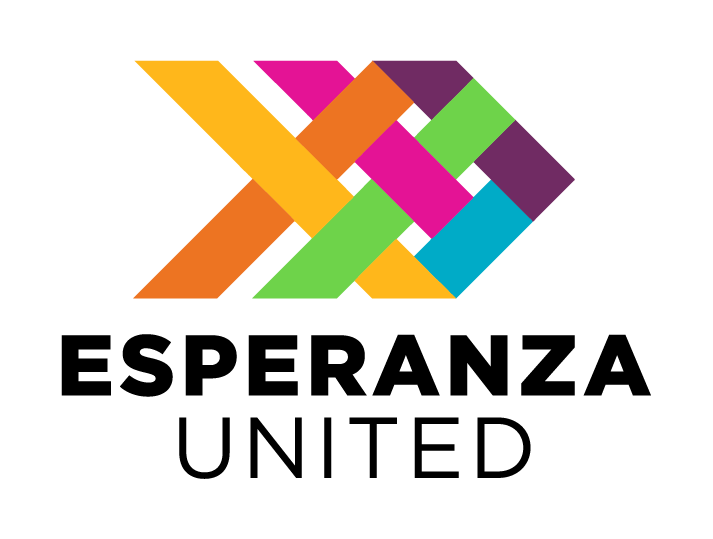About DV RISC
With the support of the U.S. Department of Justice’s Office on Violence Against Women (OVW), DV RISC provides training and technical assistance (TTA) to communities working to implement intimate partner violence (IPV) risk assessments, grounded in coordinated responses to intimate partner violence and intimate partner homicide prevention and reduction.
Who We Are
DV RISC is a partnership between the Center for Justice Innovation and Esperanza United.
The Center for Justice Innovation works with communities and justice systems to advance equity, increase safety, and help individuals and communities thrive. The DV RISC project is part of the work of the Center’s Gender and Family Justice team, which helps courts and communities respond creatively, holistically, and effectively to domestic violence, sexual assault, stalking, and dating violence.
Esperanza United mobilizes Latin@ communities to end gender-based violence. Founded in 1982 as a culturally specific shelter and hotline by a group of persevering Latinas in St Paul, Minnesota, the organization continues to provide direct services and prevention initiatives locally. Nationally, Esperanza United provides public policy advocacy, research, and training and technical assistance. The DV RISC project is a core project of the national training and technical assistance program that enhances institutional and organizational cultural responsiveness to increase the safety and well-being of the Latin@ community as well as other marginalized communities.
DV RISC was created in 2021 as a collaboration between the Center for Justice Innovation, Esperanza United, and Ujima Inc. - the National Center on Violence Against Women in the Black Community. Special thanks to all of the initial partners for their essential contributions and expertise.


Our Guiding Principles
The use of risk and lethality assessments and strategies should be part of a larger community response. The overrepresentation of historically marginalized populations in systems, but their underrepresentation in policy decision making, reinforces marginalization. Therefore, the voices of historically marginalized populations must be included in a community’s decision making regarding the use of risk and lethality strategies.
Addressing intimate partner homicide reduction, and any risk or lethality assessment used, should be both comprehensive and equitable. Approaches that identify and amplify community strengths and values, help in supporting safety in the community. Planning and executing the implementation of risk and lethality assessment strategies in partnership with historically marginalized populations will yield more equitable outcomes.
The voices of families, friends, and community members who have been impacted by intimate partner violence and intimate partner homicide should inform prevention efforts. Planning and implementation of risk and lethality assessment strategies should include the voices of those most impacted.
Risk and lethality assessments are one critical component in holding individual abusive partners accountable. Accountability strategies should include programming and supervision that respond to the individual level of risk and address the needs identified by the assessments.
While strategies need to hold the person who causes harm accountable, the systems and community agencies surrounding a survivor and abusive partner need to examine what efforts they can make to reduce risk and harm, including the unintended consequences of risk and lethality assessments. For example, agencies using risk and lethality assessments need to be held accountable to using them in ways that do not lead to further overrepresentation of marginalized populations in systems. Furthermore, the safety of survivors is paramount in any risk or lethality assessment strategy, and agencies must be held accountable to ensuring that they do not cause further harm or increase danger.
Clear protocols should guide communication and coordination among organizations, systems, and the wider community. Several tools may be in use that aim to identify risk and lethality. Collaborating partners should know what tools are being used by whom, what information should or should not be shared, and when information needs to be relayed to inform subsequent decisions.
Survivor Advisory Board
DV RISC was created and informed by a Survivor Advisory Board composed of individuals who are survivors of intimate partner violence and family survivors of intimate partner homicide. We recognize, honor, and uplift the Board’s contribution to DV RISC, ensuring the voices of those most impacted by intimate partner violence and intimate partner homicide are included.
Our Partners
In commitment to our values and guiding principles, DV RISC partners with culturally responsive agencies, subject matter experts, and consultants, to meet the individual needs of communities and identify emerging best strategies in reducing risk and preventing domestic violence homicides.
DV RISC continues to expand and form new partnerships that can respond to the diverse needs of all communities and professionals. DV RISC is grateful for the support of its consultants and its partner agencies, listed below.

